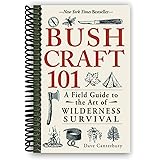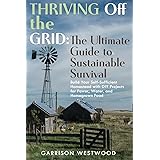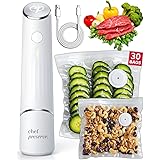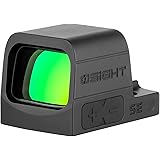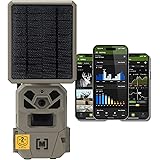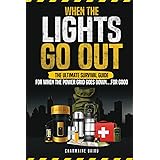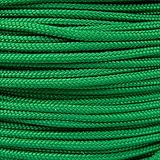Essential Survival Tools: Equipping Yourself for Any Emergency
Every year, countless individuals face unexpected emergencies, from car breakdowns in remote areas to natural disasters and unforeseen accidents. According to statistics, a significant percentage of people are caught unprepared during these critical moments. While the video above offers a compelling glimpse into some truly innovative survival tools that could be life-saving, understanding their full potential and how they fit into a comprehensive preparedness strategy is crucial. This guide delves deeper into these remarkable gadgets and explores the broader concept of equipping yourself with essential emergency survival tools.
Being prepared isn’t just for outdoor adventurers or “preppers”; it’s a fundamental aspect of modern safety. Whether you’re commuting to work, embarking on a family road trip, or simply at home, having the right survival gear can make all the difference between a minor inconvenience and a life-threatening situation. Let’s explore the categories of tools vital for your readiness.
1. Automotive Self-Rescue: Your Lifeline on the Road
Road incidents are among the most common emergencies people encounter. What happens if your vehicle breaks down in an isolated area, or worse, you’re involved in an accident where traditional escape methods are compromised? This is where dedicated automotive self-rescue tools become invaluable, transforming a potentially dire situation into a manageable one.
The AutoXscape by InGear, as highlighted in the video, exemplifies top-tier automotive safety. It’s not just a flashlight; it’s a multi-functional device designed for rapid escape. The importance of its features cannot be overstated:
- High Carbon Steel Blade: A jammed seatbelt can trap you in a dangerous vehicle. This military-grade blade slices through seatbelts instantly, allowing for quick egress. Imagine being in a car that’s overturned or on fire; every second counts.
- Two Separate Steel Tips: Vehicle windows, especially tempered side windows, are designed to withstand impact but can be a barrier during an emergency. These specialized tips enable you to easily smash through glass, providing an escape route when doors are jammed. This is particularly critical in submerged vehicles where water pressure can make opening doors impossible.
- Powerful Front LED (135 lumens) & 28-Hour SOS Mode: Visibility is paramount, especially at night or in adverse weather. A 135-lumen flashlight can illuminate your surroundings, signal for help, or guide you to safety. The 28-hour SOS mode is a game-changer, allowing you to signal rescuers over an extended period without constantly managing the light, conserving crucial battery life.
- Military-Grade Aluminum Body: Durability ensures your tool works when you need it most. Being waterproof and impact-resistant means it can withstand harsh conditions often associated with emergencies.
An automotive self-rescue tool isn’t just a gadget; it’s an investment in the safety of yourself and your loved ones. Keeping it mounted within quick reach, as recommended, ensures it’s accessible precisely when a crisis unfolds. It’s a critical component of any comprehensive car emergency kit.
2. Mastering Fire: The Fundamental Survival Skill
In a true survival scenario, fire is often considered one of the most important elements. It provides warmth, purifies water, cooks food, signals for rescue, and offers psychological comfort. While modern conveniences often make us forget the primal importance of fire, having a reliable way to start one is non-negotiable for any survivalist.
The Bear Grylls Tinderbox featured in the video is an innovative approach to fire starting, blending multiple functions into a compact unit. Its key features simplify what can be a challenging task in the wilderness:
- Grater-Like Steel Cutting Surface: This ingenious feature allows you to create fine wood shavings (tinder) directly from sticks or other flammable materials. The finer the tinder, the easier it is to ignite.
- Tinder Catch Tray & Easy Removal Button: This design prevents your carefully prepared tinder from scattering, especially in windy conditions. The button for easy removal ensures you can transfer your tinder to a larger fire lay without disturbing it.
- Magnifying Glass: A timeless method for fire starting, especially useful when traditional fire starters or matches are wet. Harnessing the sun’s energy provides an unlimited, reliable ignition source on clear days.
- Emergency Signaling Mirror: Communication is key in a survival situation. A signaling mirror can reflect sunlight over vast distances, alerting aircraft or ground search teams to your location, significantly increasing your chances of rescue.
- Bear Grylls Priorities of Survival Pocket Guide: Knowledge is power. An included guide with fundamental survival principles can be invaluable, especially for beginners facing unexpected challenges.
Beyond specialized tools like the Tinderbox, understanding basic fire theory is crucial. You need three components: fuel (tinder, kindling, firewood), heat (ignition source), and oxygen. Always prepare a fire lay with different sizes of fuel, from the smallest tinder to larger kindling, before attempting to ignite. This systematic approach ensures your efforts are not wasted when you finally get a flame. Always remember to build your fire on a safe, non-flammable surface, away from tents or dry vegetation.
3. The Versatility of Multi-Purpose Tools: From SPARTool to Tomahawk
When space and weight are at a premium, multi-purpose survival gear proves its worth. These tools combine several functions, reducing the need to carry individual implements and streamlining your emergency kit. The video introduces two exemplary multi-tools: the SPARTool and the Schrade SCX4 Tomahawk, each offering unique benefits for diverse situations.
The SPARTool: The Ultimate All-in-One
Weighing less than 3 pounds, the SPARTool is a marvel of design and engineering, combining eight essential tools into one robust unit:
- Shovel: Essential for digging latrines, trenching around a shelter, or excavating for water.
- Axe: For chopping firewood, clearing brush, or building shelters.
- Machete: Ideal for clearing dense vegetation or as a defensive tool.
- Saw: Perfect for cutting through branches for shelter building or firewood where an axe might be too cumbersome.
- Hammer: For driving stakes, making repairs, or breaking objects.
- Pick: Useful for breaking up hard soil or ice.
- Prybar: For leveraging, opening crates, or demolition tasks.
- Bottle Opener: A small comfort after a hard day’s work, proving even in dire situations, practical comforts can matter.
Constructed from spring-tempered 1075 carbon steel and shatterproof Zytel polymer, the SPARTool is built for durability. Its solid design, lacking hinges or moving parts, enhances its strength and reliability, ensuring it won’t fail when you need it most. Whether for wilderness excursions, garden work, or home emergency preparedness, its balanced design and comprehensive functionality make it an indispensable asset.
The Schrade SCX4 Tomahawk: Power and Precision
The Schrade SCX4 Tomahawk offers a different approach to versatility, focusing on chopping, cutting, and penetration power in a lightweight package (a mere 1 and 3/4 pounds). This tactical and survival instrument is crafted from premium materials:
- 3Cr13 Stainless Steel Axe Head: This rugged, powder-coated steel ensures durability and corrosion resistance, essential for outdoor use.
- Sharp 3.3-inch Edge: Ideal for chopping wood, clearing paths, or precision cutting. The ability to shift grip on the handle allows for both controlled cuts and powerful blows.
- Hardened Pointed Spike: This feature brings maximum penetration power, useful for breaching, self-defense, or breaking through tough materials.
- Nearly Indestructible Handle: Low-density polyethylene molded around the axe head’s tang creates a handle that can withstand rigorous use.
- Over 3 Feet of 550 Spec Paracord: Wrapped around the lower handle, this provides a superior gripping surface and can be unraveled for hundreds of uses, from securing shelters to making traps or emergency repairs. The option to tether the tomahawk to your wrist enhances safety during aggressive use.
- Nylon Belt Sheath: Safe storage and quick access are critical. The sheath protects the blade and allows for comfortable carrying on a belt or lashed to other gear.
Both the SPARTool and the Schrade Tomahawk serve as excellent examples of how specialized survival tools can drastically improve your capabilities in the field. Choosing between them often depends on your primary needs and the type of environment you anticipate encountering. The SPARTool excels in general utility and digging, while the Tomahawk offers superior chopping and penetration in a more compact, focused form.
4. Everyday Carry (EDC): Constant Readiness with the Jackfish
The philosophy of Everyday Carry (EDC) is simple: always have essential survival tools on your person that can help you navigate common challenges or emergencies. The video introduces the Jackfish, a brilliant example of an EDC item that prioritizes discretion and constant availability.
The Jackfish is a multi-tool ingeniously designed to be credit card-sized, allowing it to slot seamlessly into your wallet alongside your bank cards. This solves one of the biggest challenges of preparedness: ensuring your tools are always with you. Its “perfectly safe” design, with the knife tucked away and the fire steel protected, means you don’t have to worry about accidental deployment while it’s in your wallet.
Beyond the specific features of the Jackfish, the concept of EDC extends to a small collection of items you consistently carry. Common EDC items might include:
- Small Knife or Multi-tool: For opening packages, cutting cordage, or minor repairs.
- Flashlight: A compact, powerful light for navigating dark spaces or identifying objects.
- Lighter or Fire Starter: For starting fires, or even just lighting candles during a power outage.
- Medical Supplies: Basic first-aid items like bandages, antiseptic wipes, or pain relievers.
- Communication Device: Your phone, often supplemented by a portable charger.
- Cash: In case electronic payment systems are down.
The power of EDC lies in its immediacy. You don’t have to go back to your car or backpack; the tool is already in your pocket or wallet, ready to assist with minor inconveniences or critical situations that arise unexpectedly. The Jackfish embodies this principle perfectly, proving that even a credit card-sized item can be a formidable piece of survival gear.
5. Building Your Comprehensive Survival Kit: Beyond Individual Tools
While individual survival tools like the AutoXscape or SPARTool are excellent, their true power is unleashed when they become part of a well-organized, comprehensive survival kit. Think of your kit as a layered approach to preparedness, designed to address various needs in different scenarios. Whether it’s a “bug-out bag” for evacuation, a “get-home bag” for travel, or an emergency kit for your home or vehicle, customization is key.
Beyond the multi-functional tools discussed, consider these essential categories when building your ultimate emergency survival kit:
-
Water & Hydration:
- Water bottles or hydration bladder
- Water purification tablets or a portable filter (e.g., Sawyer Mini)
- Collapsible water containers
-
Shelter & Warmth:
- Emergency blanket or sleeping bag
- Tarp or lightweight tent
- Paracord (as discussed with the Tomahawk, but always useful)
- Warm clothing layers (wool or synthetic)
-
Food & Nutrition:
- Non-perishable, high-calorie food bars
- Dried fruits, nuts, and jerky
- Fishing line and hooks, snares (for advanced wilderness survival)
-
First Aid & Medical:
- Comprehensive first-aid kit with bandages, antiseptic, pain relievers, prescription medications
- Trauma shears
- Tourniquet
-
Navigation:
- Map of your area (waterproof)
- Compass (and knowledge of how to use it)
- GPS device (with extra batteries)
-
Communication & Signaling:
- Whistle
- Signaling mirror (like the one on the Tinderbox)
- Weather-band radio
- Fully charged power bank for cell phone
-
Lighting:
- Headlamp (with extra batteries)
- Flashlight (like the AutoXscape)
- Light sticks
-
Self-Defense (optional, based on personal assessment):
- Pepper spray
- Tactical knife or fixed blade (beyond the multi-tool)
Regularly check and update your kit. Batteries expire, food goes bad, and your needs might change. Learning how to use each item effectively is just as important as owning it. Practice fire starting, knot tying, and basic first aid. Knowledge combined with quality survival tools is the most powerful preparation you can have.
Ultimately, investing in robust, reliable emergency survival tools and developing a preparedness mindset empowers you to face uncertainties with confidence. Whether it’s a dedicated self-rescue device for your car, an innovative fire starter, a versatile multi-tool, or a compact everyday carry item, these tools are designed to keep you safe and prepared for whatever challenges lie ahead.


